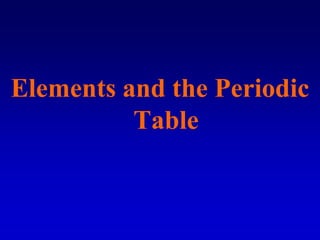The document discusses the classification of elements and the periodic table. It explains that elements are arranged in the periodic table according to their atomic structure and properties, with similar elements grouped together. The periodic table is divided into rows and columns, with each row representing an energy level and each column representing common chemical properties. The position of an element in the table predicts its chemical behavior and reactivity with other elements.

















































